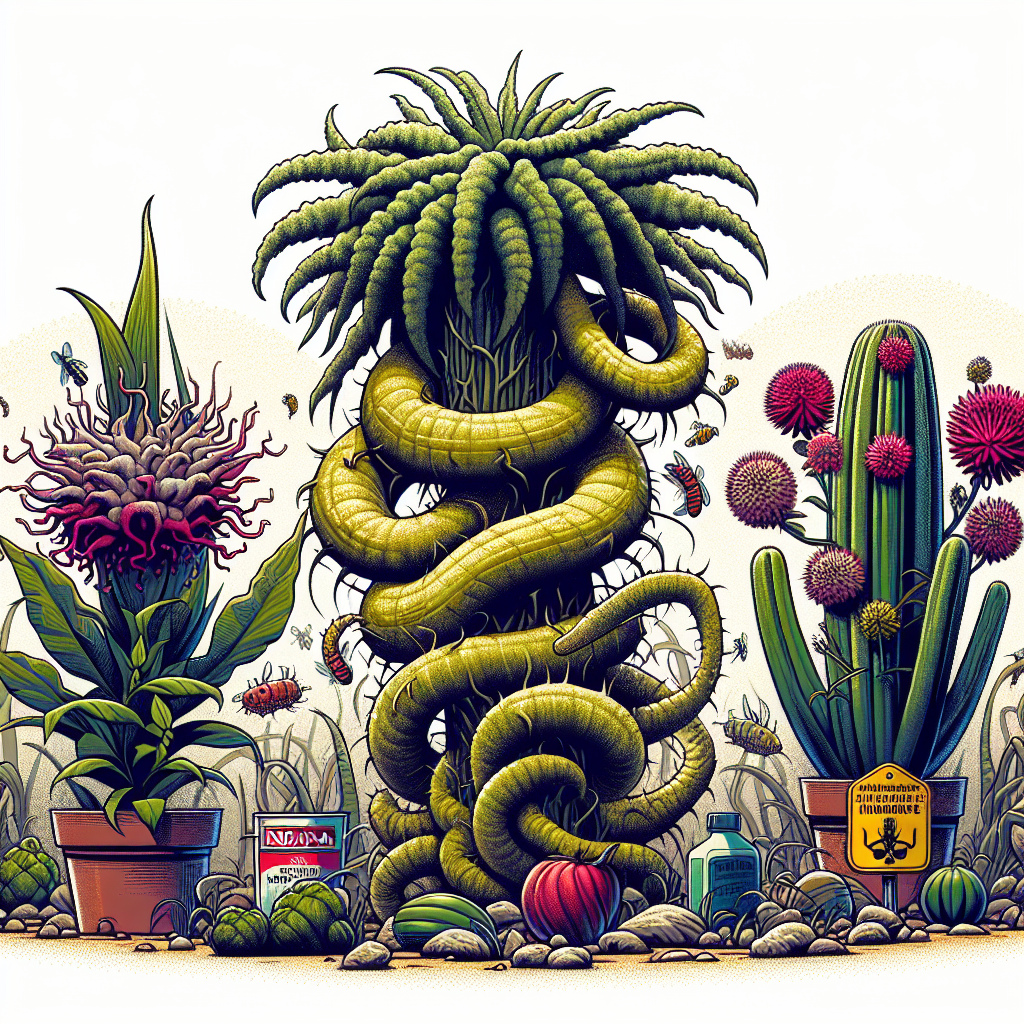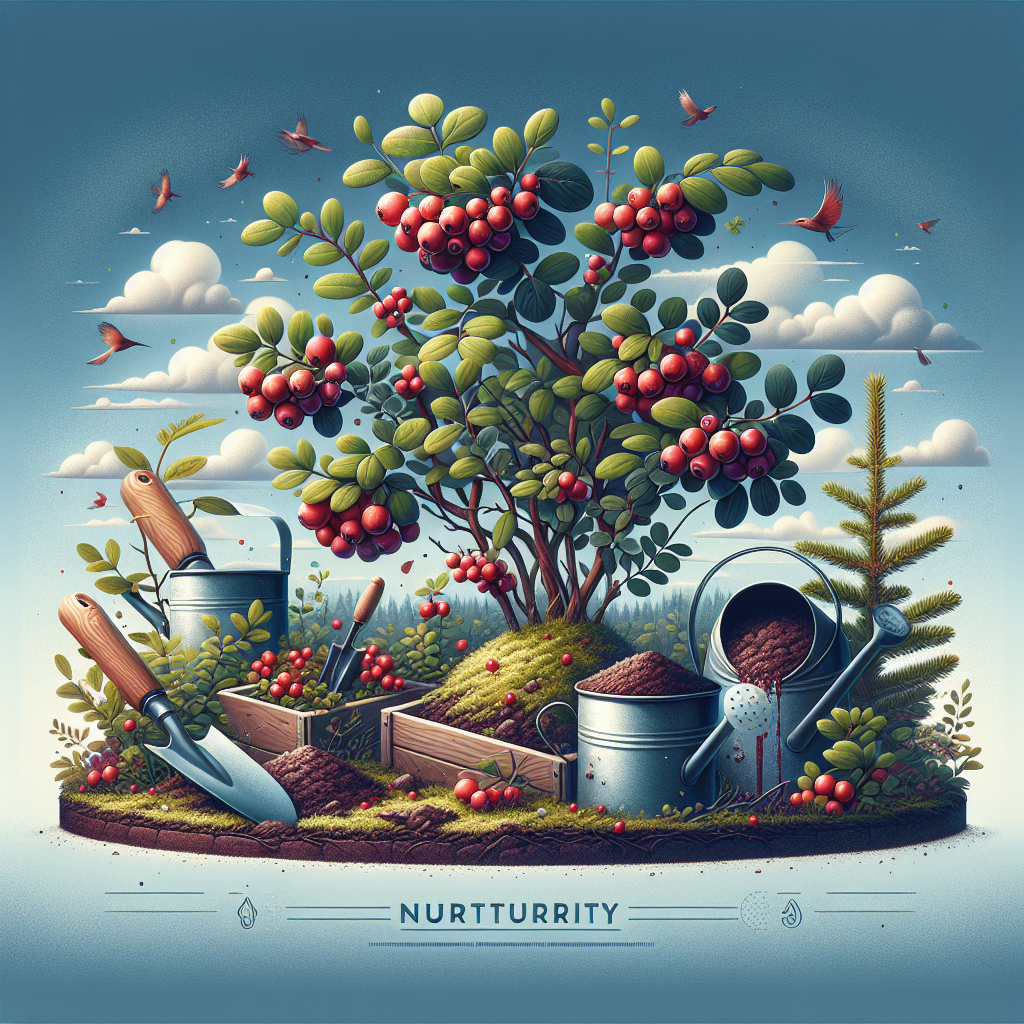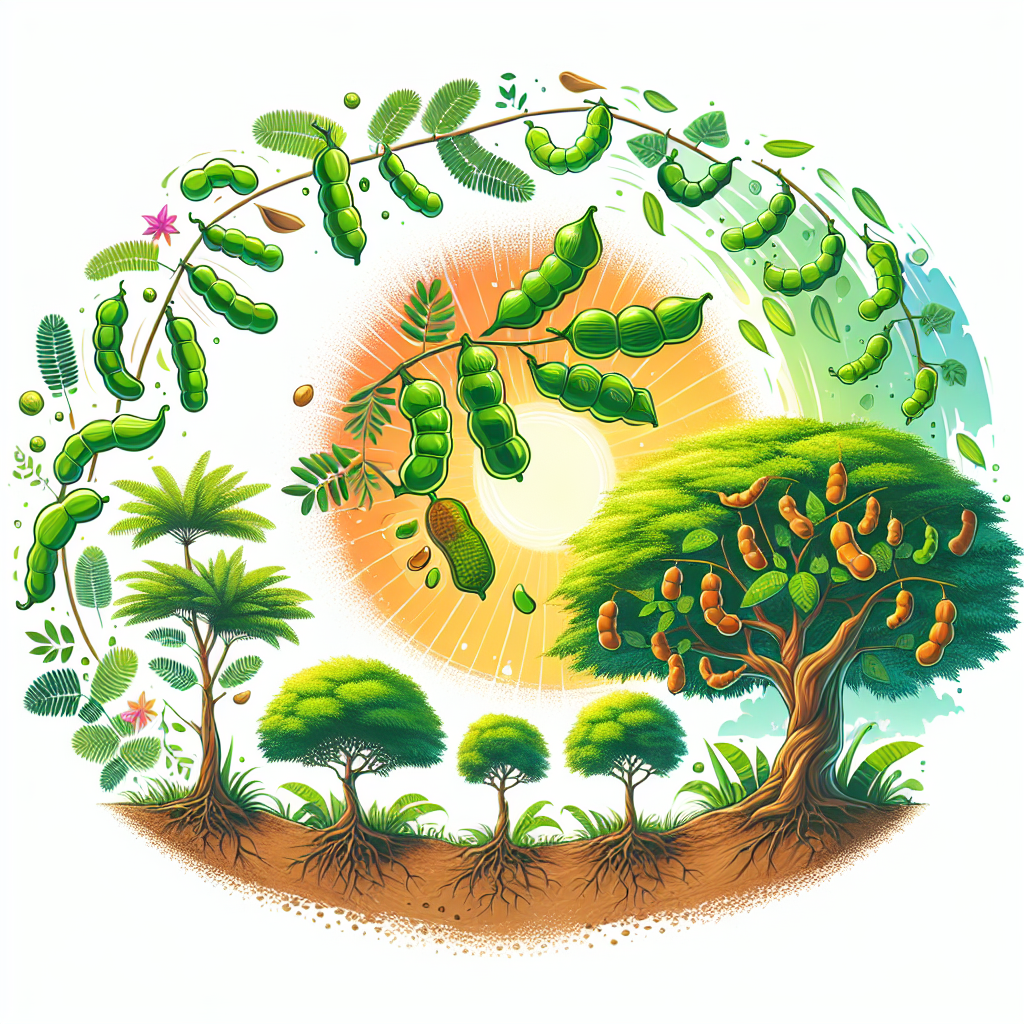Indiana’s Garden Nemeses: Plants to Beware
Updated June 24, 2024 at 12:25 am

Unwanted Visitors in Your Indiana Garden
Imagine carefully planning the layout of your garden, selecting a vibrant palette of plants, and nurturing them with tender care, only to discover unsightly guests that threaten your plant oasis. If you’re an avid gardener in Indiana, you might be all too familiar with the challenges of dealing with invasive plants and stubborn garden nemeses.
To arm yourself against these unwelcome invaders, it’s crucial to learn which plants are considered nemeses in Indiana gardens and the best strategies for keeping them at bay. Read on for an in-depth analysis and some specific recommendations that could help preserve the beauty and health of your garden.
Understanding Indiana’s Invasive Plant Species
One of the first steps in safeguarding your garden is identifying which plants pose a threat. In Indiana, invasive plant species not only compete with your beloved plants for resources but can also disrupt local ecosystems. Here’s a detailed breakdown of some invasive plants that might be hiding in plain sight in your garden space.
Canada Thistle: The Persistent Perennial
- Pet Friendly: Toxic to pets if consumed in large quantities
- Light Requirements: Thrives in full sun but can tolerate partial shade
- Watering: Drought-resistant once established, but prefers moist soil
- Humidity: Not a significant factor for this plant
- Temperature: Cold-hardy and can survive the chilly Indiana winters
- Difficulty: Incredibly difficult to eradicate once it has taken hold
Canada Thistle (Cirsium arvense) is a tenacious weed that can quickly overrun your garden. Known for its spiny leaves and purple flower heads, this thistle has a deep and extensive root system that can spread aggressively. If you spot the signature purple blooms or prickly leaves, it’s time to take action – but what’s effective?
Control Strategies for Canada Thistle
When dealing with Canada Thistle, one approach is repeated mowing or cutting to exhaust the plant’s resources. However, for long-term control, many gardeners turn to selective herbicides that target broadleaf plants like this thistle. One such product enthusiastically reviewed by many is Ortho Weed B Gon Chickweed, Clover & Oxalis Killer.
This herbicide is touted for its selective action, which means it kills weeds without harming grass. Gardeners often mention how the easy-to-use spray nozzle allows for precise application, minimizing damage to non-target plants. Here’s a balanced look at what users have said about this product:
Pros
- Effectively kills broadleaf weeds like Canada Thistle without damaging lawns
- Rainproof in hours, ensuring the product stays where applied
- User-friendly nozzle for targeted application
Cons
- May require multiple applications for stubborn weeds
- Chemical herbicides not preferred by organic gardeners
- Some users report damage to nearby flora if not applied carefully
If you opt for this method, always follow the manufacturer’s instructions and consider the environmental impact. Remember, your garden’s health and harmony rest on a careful balance of eradicating nuisances while preserving the beneficial flora and fauna.
Find This and More on Amazon
Japanese Knotweed: The Invading Ornamental
- Pet Friendly: Non-toxic to pets but can cause allergic reactions in some animals
- Light Requirements: Enjoys sunlight but can grow in partial shade
- Watering: Prefers regular watering, but can tolerate some dryness
- Humidity: Tolerates high humidity
- Temperature: Grows aggressively in spring and summer; dies back in winter
- Difficulty: Very difficult to control, can regrow from tiny root fragments
Japanese Knotweed (Fallopia japonica), originally introduced as an ornamental plant, is now a notorious garden menace. With its bamboo-like stems and broad leaves, it may appear attractive, but don’t let the looks deceive you. Once established, it’s a nightmare to remove, with roots that can extend deep into the ground and spread across long distances.
Battling Japanese Knotweed
Physically removing Japanese Knotweed is strenuous and often futile, as even a small piece of root can give rise to a new plant. Chemical treatments are more effective, and many turn to products like Roundup Concentrate Plus. Based on feedback from other gardeners, Roundup is highly regarded for its ability to deal with tough invasive species like Knotweed.
Here’s what people often appreciate and caution about using a product like Roundup:
Pros
- Powerful systemic action that kills the roots of invasive plants
- Concentrated formula offers flexibility in mixing based on plant size and infestation level
- Results usually visible in a matter of days
Cons
- A non-selective herbicide that can harm any plant it touches
- Use requires caution and precision to avoid unintended damage
- Environmental concerns and regulations may restrict usage in certain areas
The strategic use of such herbicides combined with measures like soil tarping to block sunlight can help suppress this plant’s comeback. Being diligent in your application and patient with the process is key to winning the long-term battle against Japanese Knotweed.
Find This and More on Amazon
Purple Loosestrife: Beauty Betraying Biodiversity
- Pet Friendly: Generally safe, but not recommended for consumption
- Light Requirements: Full sun is best for its growth
- Watering: Prefers wet conditions and often found near water bodies
- Humidity: Does not have specific humidity requirements
- Temperature: Hardy in a variety of climates, including the varying Indiana weather
- Difficulty: Moderately difficult to control without disturbing the habitat
Purple Loosestrife (Lythrum salicaria) can often be seen brightening up wetlands with its stunning red-purple spires of flowers. Yet, beneath its beauty lies a destructive tendency to choke out native plants and disrupt wetland habitats. Recognizing this plant early on is crucial, as mature individuals can produce over a million seeds annually.
Natural and Chemical Strategies Against Purple Loosestrife
One natural method that’s both fascinating and effective involves the introduction of specific beetle species known to feed on Purple Loosestrife, such as the Purple Loosestrife Beetle. This biological control can take time but has proven to be a sustainable approach that harmonizes with the environment.
For those seeking a more immediate solution, herbicides like Rodeo Herbicide have gained popularity for their efficacy against Purple Loosestrife. Its formula is especially designed for aquatic environments, reducing the risk to fish and wildlife. It’s important to note that herbicide application in water-adjacent areas often requires a permit, and instructions must be followed precisely to avoid damaging delicate ecosystems.
Pros
- Targeted formulation suitable for aquatic and wetland areas
- Effective on a broad range of aquatic weeds
- Minimal impact on wildlife when used as directed
Cons
- Regulatory restrictions on usage near water bodies
- Requires careful handling and adherence to safety protocols
- May not provide immediate results
By combining these approaches with consistent monitoring of your garden and wetland areas, you can greatly reduce the impact of Purple Loosestrife on your local ecosystem.
Find This and More on Amazon
Natural Remedies for Garden Nemeses
While chemical herbicides offer fast results, many gardeners in Indiana seek an environmentally friendly approach. Natural remedies can sometimes provide effective solutions without harming the ecosystem. Lets dig into some natural options that could assist you in your battle against garden nemeses.
Mulching, for instance, is highly recommended by enthusiasts as a way to suppress weeds. It helps retain soil moisture while simultaneously blocking light from reaching the soil surface, preventing weed seeds from germinating. Additionally, mulches like cedar bark have been shown to offer natural oils that act as insect repellents.
Beneficial Plants and Companion Planting
Companion planting is another strategy that can improve your gardens health and deter invasive species. Aromatic herbs such as lavender, rosemary, and mint are known to be repellent to certain pests and can help protect more vulnerable plants.
Marigolds are also a popular choice due to their ability to repel nematodes and other garden pests. Planting them around the perimeter of your garden or intermixing them with your crops can offer a protective barrier and enhance the biodiversity of your garden space.
Seeking Expert Advice on Invasive Plants
Managing invasive species can be tricky, and local expertise is invaluable. Reaching out to your county extension office or local gardening clubs can provide you with tailored advice based on Indiana’s specific conditions. They might also suggest tried-and-true products like the Fiskars 4-Claw Weeder.
The Fiskars 4-Claw Weeder is a tool designed to make weed removal easier, especially for deep-rooted plants like dandelions. Reviews often highlight its ease of use; by simply stepping on the foot pedal, it penetrates the soil and grabs the weed by its roots. Here are some thoughts shared by users of this weeder:
Pros
- Extended handle reduces the need for bending or kneeling
- Durable, rust-resistant construction
- Easy ejection mechanism for hands-free weed disposal
Cons
- May struggle with removing weeds in rocky or very compacted soil
- Some tougher weeds may need multiple attempts for successful removal
- Heavier and bulkier than a traditional hand weeder
With a bit of elbow grease and the right tools, even the most stubborn weeds can become manageable. The Fiskars 4-Claw Weeder is a prime example of how a simple, well-designed tool can save hours of back-breaking labor.
Find This and More on Amazon
Wintercreeper: The Hardy Ground Cover Turned Invasive
- Pet Friendly: Generally safe but not intended for pet consumption
- Light Requirements: Prefers partial to full shade
- Watering: Moderate watering needs, drought-tolerant once established
- Humidity: Can endure high humidity levels
- Temperature: Adapts well to a range of temperatures, thriving in Indiana’s climate
- Difficulty: Difficult to eradicate completely due to its resilience
Wintercreeper (Euonymus fortunei) is an evergreen vine that, although it provides excellent ground cover, can easily become invasive. It climbs trees and structures, which can lead to damage and choking out native plant species. It has small, scalloped leaves, often with a variegated pattern, making it quite ornamental but potentially harmful to your garden’s ecosystem.
Controlling Wintercreeper Without Chemicals
Physical removal is the first line of defense against Wintercreeper. This involves hand-pulling or digging out the plants, ensuring that as much of the root system as possible is removed. For larger infestations, a tool like the Radius Garden Root Slayer Shovel can become your best ally. This shovel is crafted to slice through tough roots with a serrated edge that gardeners have become fond of because it makes the job less laborious. Here are some points of consideration for this shovel:
Pros
- Strong, sharp blade capable of cutting through tough roots
- Ergonomic handle design for comfortable use
- Made from powder-coated carbon steel for durability
Cons
- More expensive than a standard shovel
- Not as effective in rocky soil conditions
- Blade requires maintenance to keep its edge sharp
The right tools can make an immense difference in handling invasive plants like Wintercreeper, and investing in a product like the Radius Garden Root Slayer Shovel can be a game-changer for maintaining the health of your garden.
Find This and More on Amazon
Asian Honeysuckle: Deceptively Delicate Invader
- Pet Friendly: Berries can be toxic to pets if ingested
- Light Requirements: Grows in both full sun and partial shade
- Watering: Requires moderate watering, especially in dry periods
- Humidity: Tolerant of high humidity levels
- Temperature: Hardy and adaptable to temperature fluctuations
- Difficulty: Invasive and challenging to control once it spreads
Asian Honeysuckle (Lonicera spp.) is a group of shrubs and vines known for their sweet-smelling flowers and rapid growth, which make them invasive in Indiana. Left unchecked, they can form dense thickets that outcompete native species. Spotting honeysuckle is easy with its tubular flowers ranging in color from white to deep pink.
Tackling Asian Honeysuckle Invasion
Physical removal of honeysuckle may require cutting the plant at the base and diligently removing new growth. Some choose to smother the area with heavy-duty landscape fabric to prevent regrowth. Yet, for many, a more robust solution like the Tabor Tools GG12 Compound Action Anvil Lopper becomes a necessity. Here are some insights based on experiences with this anvil lopper:
Pros
- Compound action blades provide extra cutting power
- Comfortable grips make it easier to handle
- Capable of cutting through thick branches
Cons
- Heavy, which may make prolonged use tiring
- Not suitable for precise or fine pruning
- Blades require regular sharpening for optimal performance
Invasive species management requires persistence and proper gear. An anvil lopper like the Tabor Tools GG12 can help clear away robust honeysuckle, allowing you to reclaim your garden space.
Find This and More on Amazon
Integrated Pest Management: A Holistic Approach
When dealing with garden nemeses, embracing an integrated pest management (IPM) approach can be highly beneficial. IPM combines biological, cultural, physical, and chemical control methods to manage pests in the most economical way possible while minimizing risks to people and the environment.
For example, encouraging natural predators like ladybugs and praying mantises can help control aphid populations. Companion planting, as mentioned earlier, also plays a role in IPM by using certain plants to deter pests or by attracting beneficial insects that will prey on the pests.
Creating a Balance with Native Plants
One effective way to mitigate the impact of invasive species is to prioritize planting native species in your garden. Native plants tend to be more resistant to pests and better adapted to the local climate, reducing the need for additional watering, fertilization, or pesticides. Plus, they provide essential habitat for native wildlife.
In Indiana, adding native plants like the wild columbine, purple coneflower, or black-eyed Susan can introduce more resilience to your garden while offering a helping hand to local pollinators and beneficial insects.
Understanding the Value of Regular Maintenance
Regular monitoring and maintenance of your garden are essential in preventing an outbreak of invasive plants or pests. This includes frequently inspecting plants for signs of infestation, promptly removing any invasive species, and maintaining healthy soil through proper fertilization and composting.
Staying vigilant allows you to catch potential issues before they become major problems, saving you time and effort in the long run.
The Role of Technology in Garden Management
Technology has given gardeners new tools for dealing with invasive species. Smartphone apps can help identify plants, pests, and diseases on the spot. Furthermore, some apps connect you with local experts and communities to share advice and solutions for particular garden challenges you might encounter in Indiana.
Incorporating these digital tools into your gardening routine can enhance your knowledge and improve your ability to handle garden nemeses effectively.
Embracing Organic Solutions
For those dedicated to organic gardening, there are numerous natural products and methods to consider. Neem oil, for example, is a natural pesticide that’s safe for most beneficial insects and can be used to tackle a range of garden pests without introducing harmful chemicals into the environment.
In addition to neem oil, diatomaceous earth is another natural product favored by organic gardeners for its insect-repellent properties, effective against a variety of crawling garden pests.
Education is Key: Learning About Invasive Species
Educating yourself about invasive species and their impacts is vital in the fight against garden invaders. There are numerous resources available, including books, workshops, and online courses that can expand your understanding and equip you with the knowledge to protect your outdoor sanctuary.
The more informed you are, the better prepared you’ll be to make decisions that benefit both your garden and the natural environment of Indiana.
Final Thoughts on Protecting Your Indiana Garden
As a gardener in Indiana, you play an integral role in preserving the natural beauty and biodiversity of your environment. By recognizing invasive plants, implementing effective control strategies, and opting for eco-friendly products and practices, you can maintain a flourishing garden that stands as an example of balance and sustainability.
It’s a constant journey of learning and adaptation, but the rewards of a healthy, vibrant garden are well worth the effort. Remember, every action you take contributes to a larger ecological picture, so garden with care, patience, and an understanding that even the smallest choices can have a big impact on the world around you.
Shop more on Amazon

